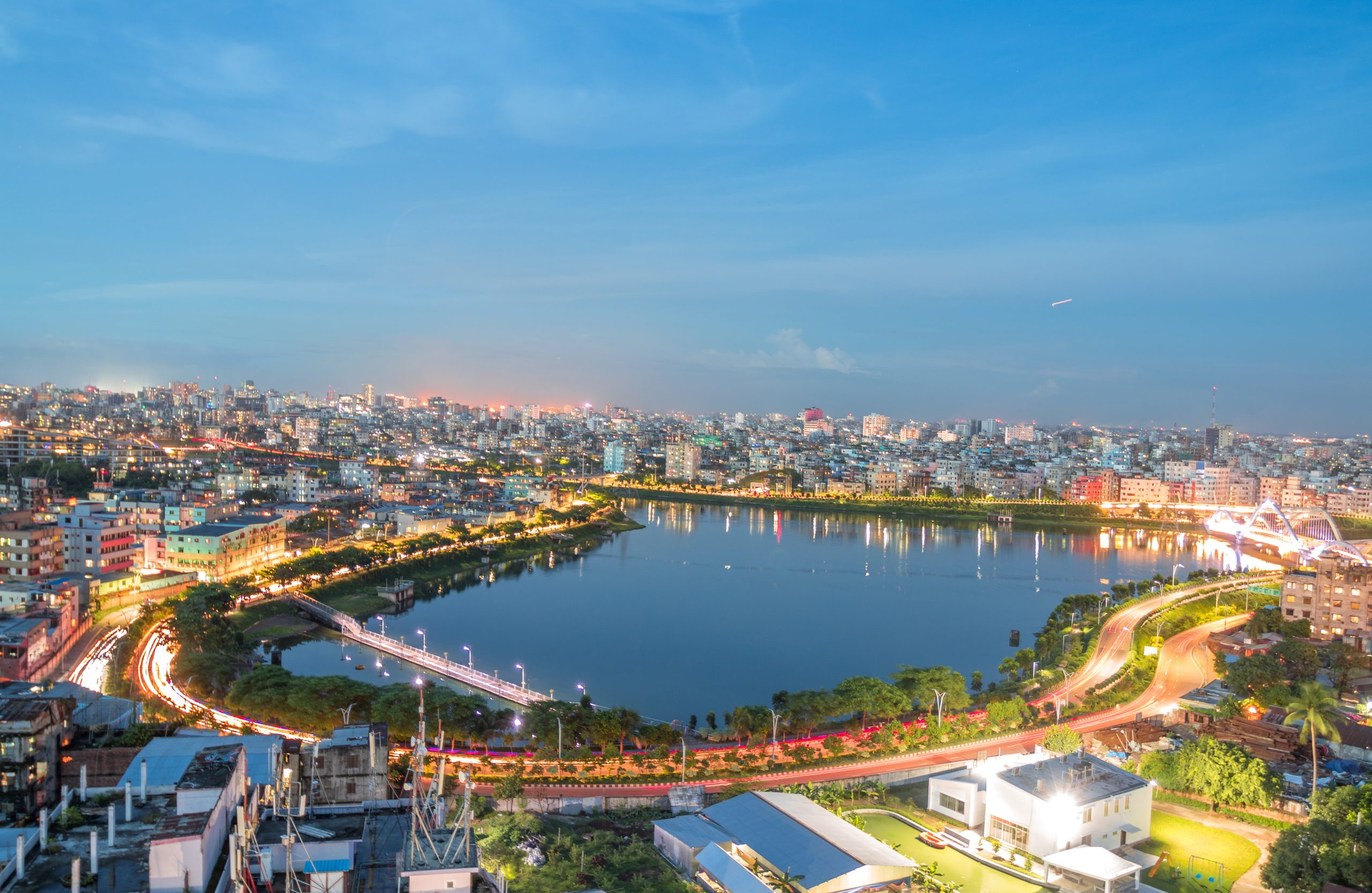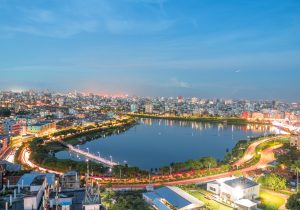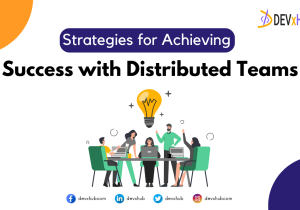Blog - Bangladesh: A Nation of IT
Emerging from its historic spice trade prominence through the tumultuous aftermath of the 1970s civil war, Bangladesh is now experiencing a resurgence, propelled by its burgeoning digital economy. Below is a brief glimpse into the realm of the Bengali.
With India to the north and west, Myanmar to the east, and the Bay of Bengal to the south, Bangladesh is a part of the Indian subcontinent. The nation is blessed with fertile land thanks to the flow of the Ganges and Brahmaputra rivers. Bangladesh is one of the world’s top producers of rice, vegetables, and mangoes for good reason.
Located in the center of Bangladesh, Dhaka is the capital city and home to 31 million of the 174 million people living there. The city is surrounded by tropical vegetation and is located close to the Buriganga River. Remains of the nation’s rich past are closely entwined with the contemporary and futuristic within the city walls.
Bangladesh’s journey, from the height of the spice trade to the civil war and the rise of the middle class, is embodied in Dhaka. There are buildings from the colonial era with Western influences, palaces, mosques, and forts from the 17th and 18th centuries, as well as skyscrapers whose doors have hardly been opened yet.
The burgeoning middle class has given the service sector impetus, as evidenced by the ceaseless opening of new shopping centers, eateries, and entertainment venues.
Bangladesh’s economy has grown at one of the fastest rates in the world over the past 25 years. The nation has heavily invested in IT and technology to advance the development even further. Going back fifty years, though, the circumstances were entirely different. Actually, not much indicated that Bangladesh should be successful.
A Tough Place to Begin
Historically, the eastern portion of the Bengal region has been the nation that we now call Bangladesh. East Bengal has been the name of the nation for thousands of years, dating back to the Indus Valley Civilization and the colonization of South Asia. Following its division into two parts, British India was renamed East Pakistan.
It makes sense that their 1947 merger with Pakistan led to the adoption of their new name. Although it was a turning point in Bangladesh’s history, this was by no means a golden age. Setting aside geographic considerations, Britain chose to divide British India in half along cultural and religious lines. With no borders, Bangladesh (then known as “East Pakistan”) is situated on the other side of India from Pakistan (then known as “West Pakistan”), making it a poor place for a new country to be founded.
From the start, the relationship between the East and the West was shaky. Both areas were highly populated, the political climate was unstable, and none of the areas had particularly abundant natural resources. A nine-month civil war started on March 26, 1971, when Bangladesh declared its independence. At its conclusion, 10,000 000 Bengals had left the country and 3,000 000 had died.
The Bangladeshi Miracle
It would be an understatement to say that Bangladesh had a challenging beginning as an independent country. The war had ripped the nation apart, and the coffers were empty.
Equally challenging were the early years of the state’s independence, marked by multiple military takeovers and political killings. The majority of people lived well below the poverty line, the child mortality rate was over 20%, and less than 5% of the population was educated.
Scarcely anyone could envision that the nation would emerge as one of the globe’s most rapidly expanding economies in the forthcoming decades. This perhaps explains why numerous individuals characterize Bangladesh as a miraculous phenomenon.
After Bangladesh achieved gradual stabilization, numerous initiatives played a role in bringing about this transformation. For example, the government embraced private sector involvement and placed emphasis on improving education and public health.
The historical statistics are astounding.
Four out of five people can read and write, the child mortality rate has dropped to three percent, the gross national product has increased by more than two percent annually since 1982, and only China has seen faster growth in agriculture since 1995. Ultimately, the average lifespan of the population has grown, rising from 45 years in 1972 to 75 years in 2024.
(Sources include: World Bank)
Bangladesh As a IT Nation
IT and technology have been selected by the Bangladeshi government as the main areas of development for the upcoming phase. Being “the IT nation of Bangladesh” is the ultimate goal. Still, the industry is not exactly new—it has been around for 62 years.
The first computer in Bangladesh was installed in the 62s, marking the start of the nation’s IT industry history. When computers first came out, their primary application was in science. Following the liberation in 1971, advanced computer equipment was first imported on a larger scale. The computer made its way into everyday homes in the 1980s, and as access to the Internet increased in the 1990s, a burgeoning export sector started to take shape.
However, the nation didn’t make significant investments in the IT sector until the 2008 financial crisis. While it is true that Bangladesh was recently listed by the Japan International Cooperation Agency as one of the top three outsourcing destinations for software and IT services competencies, the real spark that ignited the process came from the government’s introduction of Vision 2021.
The bold goal of Vision 2021 is to end poverty, guarantee universal health care, and position the nation as a regional economic powerhouse. Technology is essential to achieving these objectives. The goal is known as “Digital Bangladesh,” and as the name implies, it calls for significant infrastructure spending, the facilitation of the use of new technology, and a greater emphasis on IT in the classroom.
Some of the measures, such as setting up phone numbers for emergency services or digital banking, may seem obvious to people in the West. Nevertheless, these are services that promote social mobility, help people escape poverty, and save lives.
On the other end of the spectrum, though, are other initiatives. For example, the government invested in so-called “frontier tech” facilities alongside businesses like IBM, and just prior to the Covid pandemic, it unveiled a new AI strategy.
Youth, Urban and Educated
It’s difficult to imagine how a nation can advance technologically so quickly, but Bangladesh has been able to do so thanks to two main factors: a young population and rapid urbanization.
In Bangladesh, the median age is a mere 27,9 years old, and a third of the population is under the age of 15. As a result, the population is among the 20 youngest worldwide.
The government has made education a top priority as a result. Currently, 97% of all children are enrolled in school, and roughly 60% of them stay on after they finish primary school. When you examine the literacy statistics, the outcomes become particularly apparent.
Concurrently, the nation is going through a significant urbanization. The cities provide opportunities for increased wealth, a greater variety of recreational activities, and more specialized employment. Cities are nearly a need for economic expansion and are typically associated with an expanding middle class. By 2030, 48 percent of people are predicted to reside in cities.
Young people with only a primary education who move to the cities have opened up new opportunities for technology use, particularly in higher education.
Yearly Rate of IT Graduates
There are currently 165 universities in Bangladesh. The majority of them can be found in urban areas like Rajshahi, Khulna, Chittagong, and Dhaka. Numerous of them specialize in engineering, technology, and information technology.
Almost all graduates (600,000) speak English, and of those who graduate from Bengali universities each year, 70,000 have IT-related competencies. Since it has been crucial to us to create a position where we can hire the best of these, the developers are positioned at the top of the DEVxHUB Model.
Economic Growth Is Assisted by Technology
The investment in technology aligns with various objectives outlined in the new vision, particularly those related to economic growth. In order to enhance its appeal to investors and facilitate a shift away from reliance on agriculture and primary industries, Bangladesh has established economic zones tailored to different sectors.
A government agency was created in 2010 with the responsibility of overseeing “hi-tech parks,” as an example.
Bangladesh embarked on the development of its initial parks a few years back, but it’s only recently that momentum has significantly increased. These parks are frequently established through collaborative efforts with one of the nation’s numerous universities. However, a recent announcement revealed that the Korean conglomerate Youngone is spearheading the establishment of the first hi-tech park in the port city of Chittagong. This initiative aims to enhance the startup ecosystem and foster the growth of Bangladesh’s hi-tech industry.
While IT has yet to become the primary pillar of the Bengali economy, its significance as a growth catalyst is undeniable. Bangladesh is already a major exporter of software and IT products to over 50 nations, experiencing unparalleled growth. In 2009, the country’s exports of IT-related services and products totaled 28 million USD. Today, this figure has surged to one billion USD, with projections indicating it could reach four billion USD by 2025.
By leveraging IT and technology as assets, Bangladesh is reaping the benefits of the industry: enhanced and cost-effective public services, along with a more competitive private sector.
Choose from a selection of exceptionally skilled developers.
DEVxHUB’s decision to select Bangladesh was deliberate. The substantial investment in IT and technology has facilitated the recruitment of highly educated and experienced developers. Our strategy is to become the most appealing employer for this talent pool, which ultimately benefits our customers.
Related Posts
Categories
- App Development (2)
- Design (2)
- DEVxHUB (30)
- Digital Marketing (2)
- Guide (24)
- It Bangladesh (1)
- Logo design (1)
- Operating system (1)
- Personal Improvement (14)
- Planning (4)
- Project management (3)
- Social media (2)
- Software Development (5)
- Software Quality Assurance (8)
- Startups (1)
- Team work (1)
- UI UX (1)
- Web Development (6)
Main Tags
- 2024
- Android
- app development
- bangladesh
- content writing
- design
- devxhub
- Digital marketing
- Guide
- IOS
- It
- logo design
- Operating system
- Personal Improvement
- planning
- project management
- social media
- Software Development
- Software Quality Assurance
- software testing
- software testing types
- Startups
- Success
- team
- UI UX
- UI UX design
- VR
- Web Development















